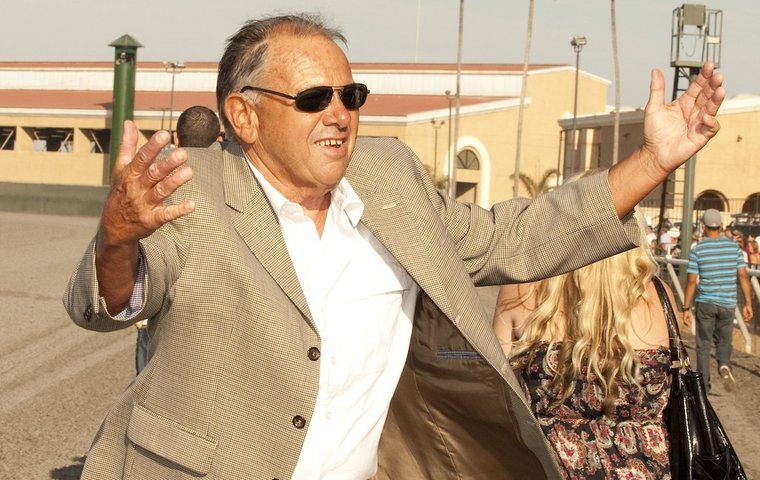
Breeders’ Cup-winning veteran of the Southern California scene is a fund of lively anecdotes – as Jay Hovdey discovered in a recent interview following the trainer’s retirement earlier this month.
USA: Bill Spawr had been working so hard for so long, head down paying attention to his horses to the exclusion of all else, that it was not until he announced his retirement in early March before he came to realize how much he was respected and admired.
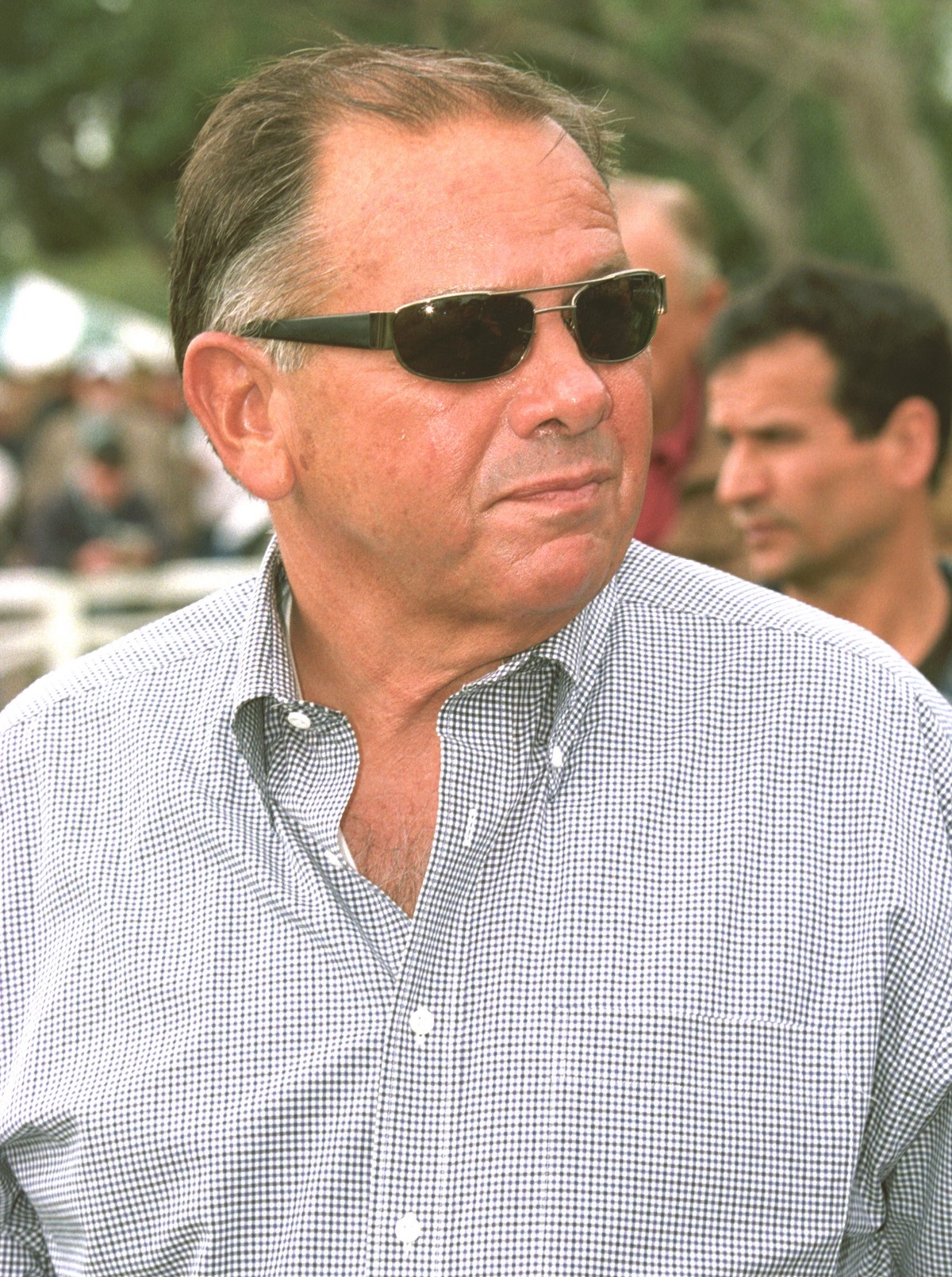 “It’s really kind of a surprise,” Spawr said, genuinely affected. “I guess people liked the way I handled myself and my horses all these years.”
“It’s really kind of a surprise,” Spawr said, genuinely affected. “I guess people liked the way I handled myself and my horses all these years.”
Those years date back to 1977, during a robust era in the Southern California Thoroughbred scene when Spawr hung out his shingle as a public trainer. In those days, veritable titans of the sport roamed the stables of Santa Anita, Hollywood Park and Del Mar.
Charlie Whittingham, Lazaro Barrera, Ron McAnally, and Gary Jones could boast muscle-bound barns full of stakes horses. Historical figures like Buster Millerick, Robert Wheeler, and Johnny Adams still were present and accounted for.
And for Spawr to survive in the claiming game, his initial point of attack, he would find himself up against the likes of Bobby Frankel, Jerry Fanning, and Mike Mitchell, all adept practitioners of the craft.
Undaunted, Spawr carved out his own niche as a horseman who did not let his blue-collar budget dictate the quality of care with which he chose and nurtured his racing stock.
He became known as the trainer who treated his $5,000 claimers like G1 stars, a reputation that he never fought but always viewed as peculiar, based on his experience working for the top-class stables of trainers like Joe Manzi and Frank Childs.
‘No two horses are the same’
“Charlie Whittingham told me, and I took it to heart early on, that no two horses are the same,” said Spawr. “Sounds simple, but it’s true. That’s why I wanted to be at the barn at 2.30am every morning to see how they ate, to compare how they ate the day before, and the day before that. Why I went to every stall at least three times a day.”
Such a regimen is by its nature self-limiting when it comes to assembling the 100-horse stables so common at racetracks today. Spawr was content with the traditional inventory imposed by the commonplace 32- and 40-stall barns over which the head man could exert the tightest possible control.
As a result, Spawr’s career numbers require the interpretation of those who were present as patrons and competitors, who realized that a Spawr horse in any field on any day would be as thoroughly prepared as possible.
Anyway, it is a fool’s errand to compare the stats attached to various trainers, not when someone like Steve Asmussen has won more races than Bill Spawr had starters, and both answer to the same job title. Spawr’s final runner on Feb. 20, 2023, was number 9,900. From that total he won 1,709, with 1,489 second, and 1,300 third, for purse earnings of $48.6 million.
The most races ever won by Spawr in a season was 85, in 1994, when his highlight was the championship of the frantically competitive Del Mar meet. In terms of stable earnings, Spawr’s personal best came in 2001 with a $2.7m haul that compared favorably that year with such household racing names as Kenny McPeek, Bud Delp, and Tony Dutrow.
Spawr prefers to savor the individuals behind the numbers – the horses, jockeys, owners, and fellow trainers who fill his lively mind with memories that never fail to bring a smile. At 83, his contemporaries are starting to fade away, a hard fact that can allow for moments of melancholy.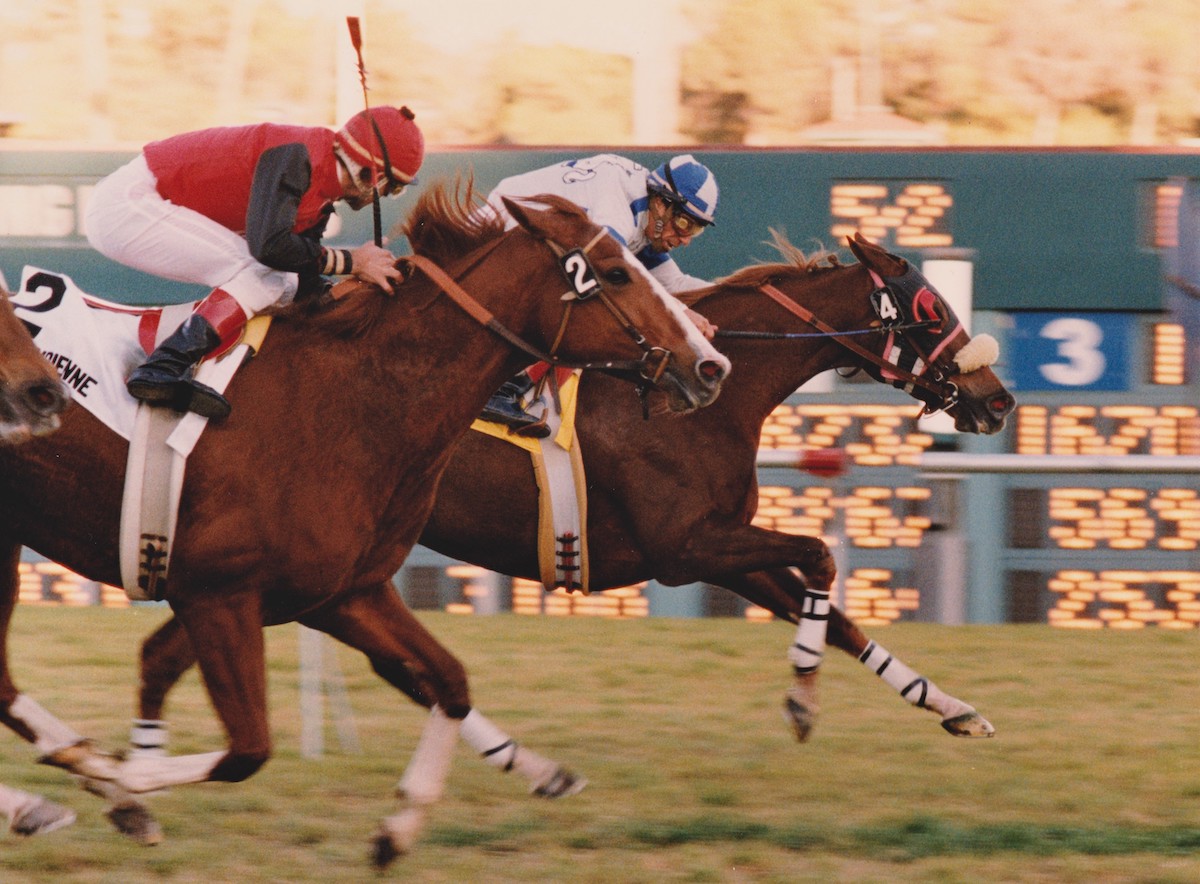
But as Spawr recently sat on a bench in the Santa Anita paddock, enjoying a warm March day between the season’s onslaught of rainstorms, he was more than willing to wander through the pages of a life well-spent in racing. There were stories, lots of stories, beginning with a horse named Restage.
Tales of the claiming game
“Did you ever hear about how we got him?” Spawr said. “It’s a great story.”
We settled in. Tales of the claiming game are rarely dull.
“My owners Hobie Alter and Fred Carillo wanted a horse for Pomona,” Spawr began, referring to the county fair east of Los Angeles that offered specialized racing around a five-furlong oval. “I told them about this horse who lugged in real bad, who’d be perfect for the bullring. Then in the race he’s real bad at the gate, stumbles at the break, and wins easily.
“I’d put in a claim for each of my guys, but everybody wants the horse, and there’s a shake,” Spawr went on. “But before they shook, I noticed there weren’t enough claim cards and said they should wait. Everybody got mad at me, they shook anyway, and I got the horse for Hobie. Then they took a look in the claim box, and sure enough one of the cards was stuck in there.”
So, to be fair, there was another shake for the horse. “And I got it for my other owner,” Spawr said with a laugh. “Now everyone’s livid, raising hell. They had to bring security down there. The steward, Dave Samuels, starts leading me away. ‘Where you guys going?’ they shout. Dave says, ‘I’m taking Bill to Vegas.’”
That was August 1984 at Del Mar. The roguish Restage, Spawr’s first headline horse, went on to win 13 races under the trainer’s care, including the Orange County Handicap around the five-furlong course at Los Alamitos.
In October 1984, Spawr claimed three-year-old Mister Gennaro for Alter and watched as he was pulled up limping after the race and had to be vanned back to the stables. Those days were long before the voided claim rule would have returned the horse to his original owner, and lucky for Spawr he was not.
After a procedure to enhance healing in a sore shin, Mister Gennaro returned to the races the following summer to win the Governor’s Cup at Pomona. Aged five in 1986, the son of Sonic Shuttle blossomed into one of the nation’s best sprinters, shading 1:08 for six furlongs in winning the Phoenix Gold Cup at Turf Paradise.
“We went to New Orleans after that,” Spawr recalled. “I flew with the horse, and when we got off the van a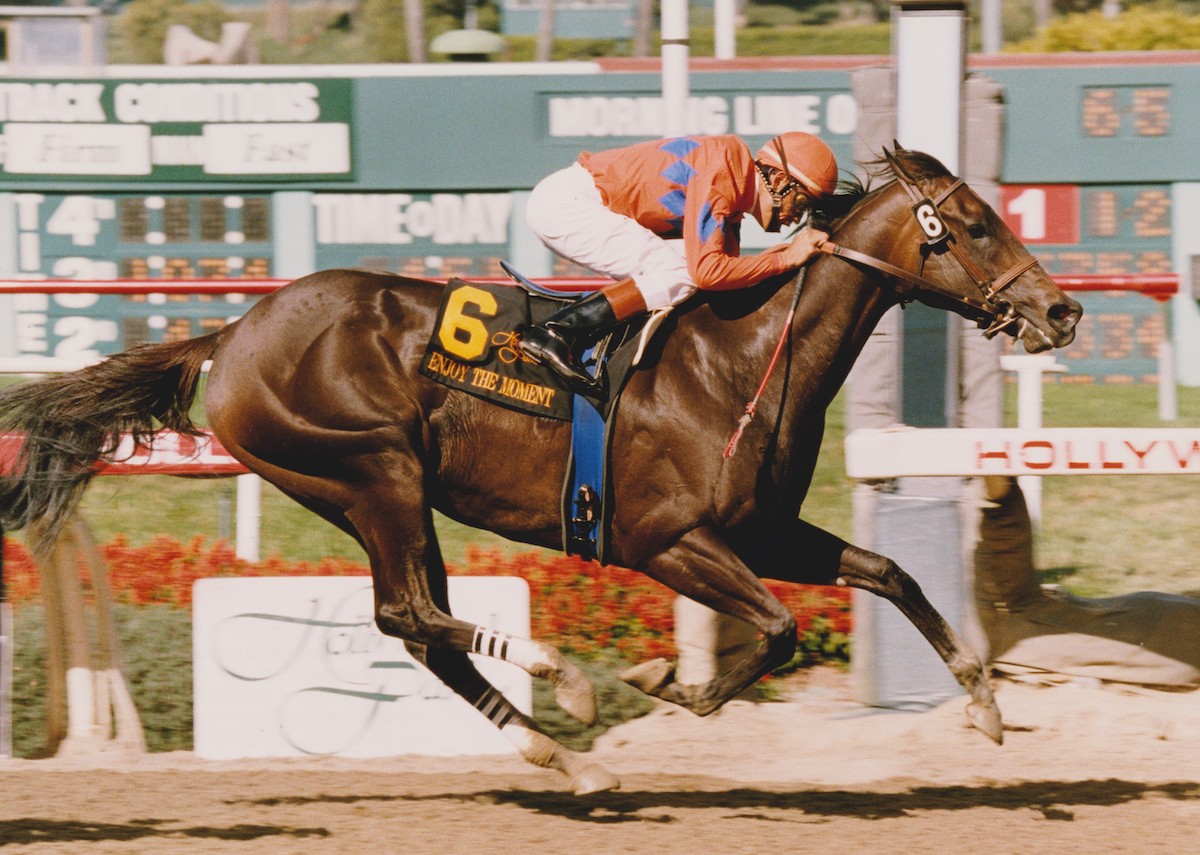 t the Fair Grounds there was a crowd of people waiting. Someone said they’d never seen a horse who could run seven-and-change before.”
t the Fair Grounds there was a crowd of people waiting. Someone said they’d never seen a horse who could run seven-and-change before.”
After finishing second to a horse trained by the legendary Jack Van Berg, it was off to Oaklawn Park for Spawr and Mister Gennaro to run in the Count Fleet Handicap.
“I arrived late, tired and hungry, so they told me to go a club next door where I could get something to eat at the bar,” Spawr said. “While I’m there I looked down at the dance floor, and there’s Van Berg dancing with his wife. He looks up and sees me. ‘Oh no, Spawr. Did you bring that horse with you?’”
Yes he did, and he won, while Big Jack finished third. “And we had dinner together that night,” Spawr said.
In the fall of 1990 it was all hands on deck for the first running of the California Cup Classic during the Oak Tree meet at Santa Anita, with a $300,000 purse offered as the highlight of a day celebrating the California breeding industry. Spawr, a native Californian himself, was high on My Sonny Boy, a son of British Classic winner To-Agori-Mou who had been developed from a claimer to winning a small stakes.
At the last minute, Pat Valenzuela, named on My Sonny Boy, was a no-show, leaving the trainer and his assistant, Darryl Rader, high and dry. “Darryl goes to the jocks’ room looking for a replacement, but there’s nobody,” Spawr said.
“He was told that Jorge Velasquez had just left the room and was heading for his car. Darryl ran to the parking lot, brought Jorge back, and they won the race.”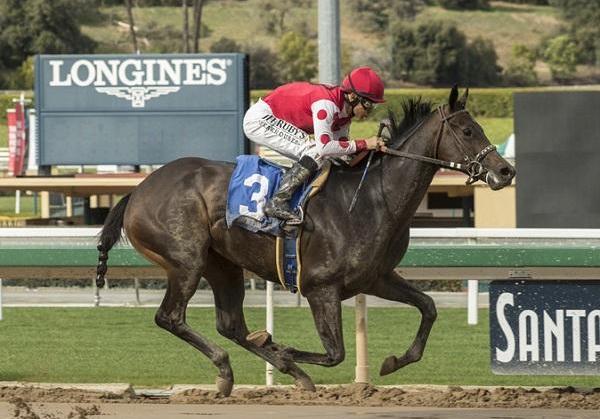
Bear in mind, this was the same Jorge Velasquez who rode a host of champions, won the Kentucky Derby with Pleasant Colony, and just three months earlier had been inducted into the Hall of Fame in Saratoga Springs.
My Sonny Boy, as good as he was that day, had to take a place well down the line in a Velasquez gallery that included Alydar, Lady’s Secret, Proud Truth, Chris Evert, Life’s Magic, and The Very One.
‘How could I ever forget?’
“Years later, I was in New York and a friend asks if I want to meet Jorge Velasquez, who by then had been retired for a while,” Spawr said. “The second he sees me he says, ‘Bill Spawr? My Sonny Boy? How could I ever forget?’”
On the stories went, spilling forth like sweets from a burst pinata.
Spawr’s first brush with greatness came while working for veterinarian Bob Baker on a visit to the Buster Millerick barn in the mid-1960s. He was told to take an eye salve to a certain stall and treat the horse who lived there. Millerick kicked a stool Spawr’s direction.
“Here,” the old horseman said. “You’ll need this.”
Spawr proceeded down the shed row, medicine and stool in hand. “I looked behind me and they were following,” he said. “I didn’t know what was going on. Then I get to the stall and there’s this big black horse towering over me. It was Native Diver.”
As in three-time Hollywood Gold Cup winner and Hall of Famer Native Diver, a winner of 34 stakes.
In late December 1975, Spawr was running the Joe Manzi stable while the boss was briefly hospitalized. Their colt Stained Glass, owned by the Oscar-winning actor Rod Steiger, had a date in the California Breeders Champion Stakes against division star Telly’s Pop, whose co-owner was none other than Telly Savalas, the movie star tough guy who was playing Kojak on the top-rated TV cop show.
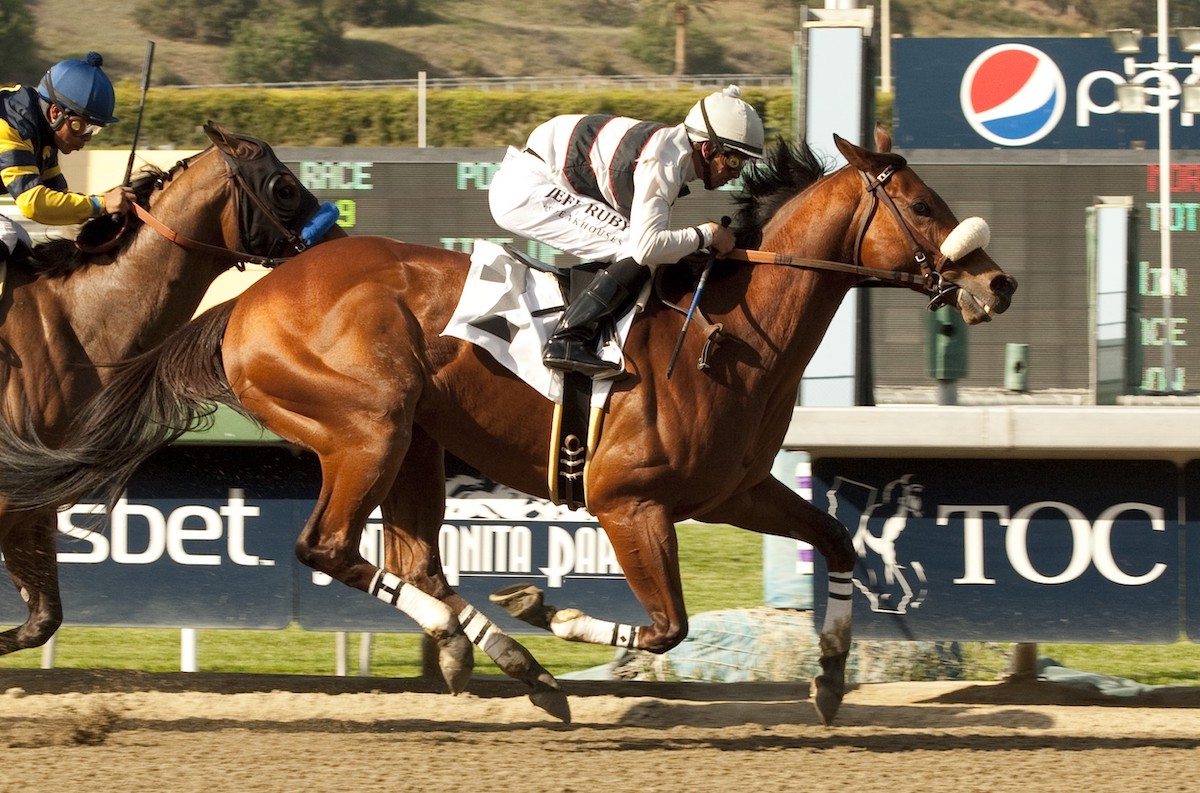 Spawr, innocent to the ways of Hollywood, was advised that Steiger and Savalas were far from friends and more than ready to let their horses do the talking.
Spawr, innocent to the ways of Hollywood, was advised that Steiger and Savalas were far from friends and more than ready to let their horses do the talking.
Stained Glass defeated Telly’s Pop that day, prompting Steiger to turn in his clubhouse box seat and hail Savalas with a universal gesture of contempt. Then he took his whole entourage to dinner at a local steakhouse, including the assistant trainer, who recalled that at the time the actor was filming a movie called W.C. Fields & Me in the title role.
“He stayed in character for the whole evening,” Spawr said. “‘Hey Bill, whaddaya think about this steak? Okay?’” Spawr’s impression wasn’t bad, for a retired horse trainer.
During his stint with Manzi, Spawr was encouraged by his boss to park his car early each morning where he could stop at the Whittingham barn on his way to work.
Learning from the greatest
“Joe worked for Charlie, and he wanted me to learn what I could just being around him for a little while,” Spawr said. “So I did, every day. Here’s Charlie Whittingham, for my money the greatest of all time, being just as nice to me as he could be. I learned so much from him.”
Since Whittingham was busy with monsters like Ack Ack, Cougar II, Ferdinand, and Sunday Silence at the pinacle of the sport, their horses rarely crossed. Then came the afternoon of Nov. 27, 1994, at Hollywood Park, when Spawr and Whittingham met in the G1 Matriarch Stakes for a purse of $400,000.
Exchange, a mare Spawr claimed for $50,000, was a known quantity among the best in the west, while Aube Indienne, a G3 filly from France, had become a G1 star for Whittingham. Laffit Pincay struck early with Exchange, but Aube Indienne and Kent Desormeaux came running to ignite an exciting final furlong. At the end it was Exchange by a head.
“You can imagine how excited I was,” Spawr said. “Then when I get to the bottom of the stairs heading to the track, who’s there to give me a big hug? It was Charlie.”
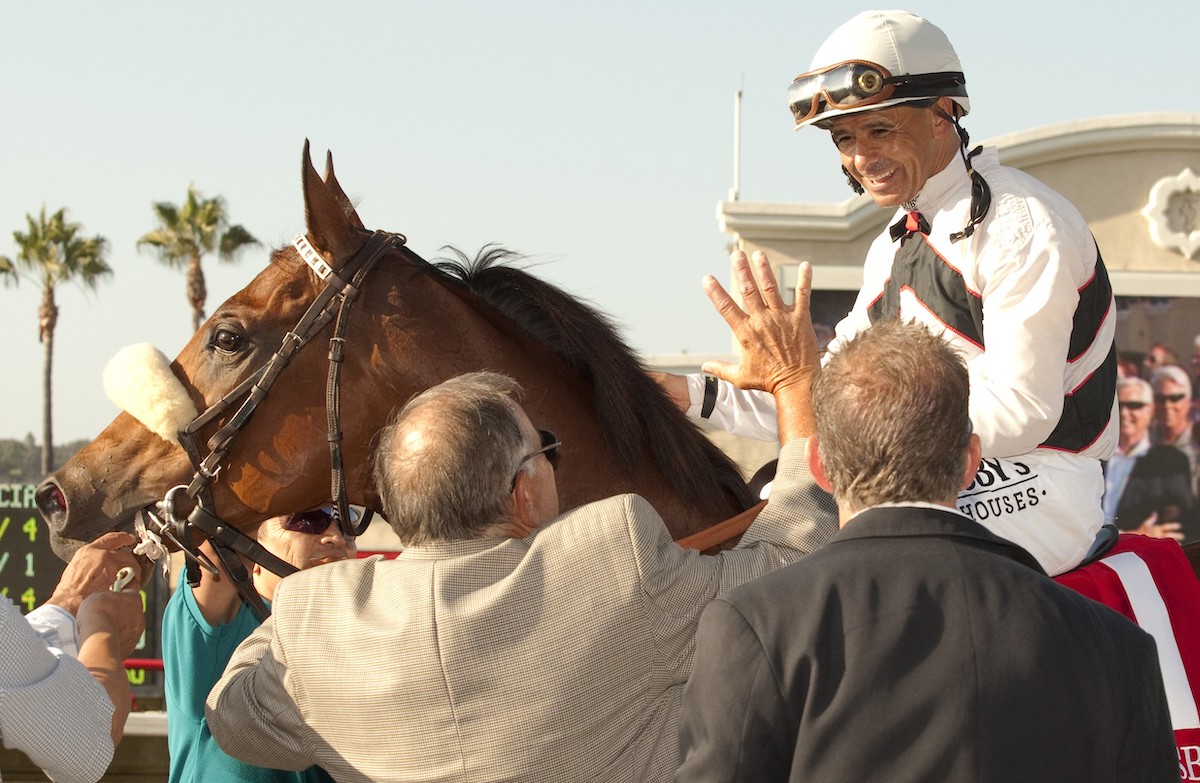 Whittingham died in 1999, which means he was not around for Spawr’s successful late innings with stakes winners like the crack sprinter Bordonaro, the G2 winner Skye Diamonds, and the young version of Midnight Bisou, who swept a trio of major West Coast stakes, including the Santa Anita Oaks, in early 2018 before she was transferred to the care of Steve Asmussen for an eastern campaign and a champiohsip the following year.
Whittingham died in 1999, which means he was not around for Spawr’s successful late innings with stakes winners like the crack sprinter Bordonaro, the G2 winner Skye Diamonds, and the young version of Midnight Bisou, who swept a trio of major West Coast stakes, including the Santa Anita Oaks, in early 2018 before she was transferred to the care of Steve Asmussen for an eastern campaign and a champiohsip the following year.
At the head of the class, however, is Amazombie, originally a toss-in as part of a two-horse package of two-year-olds bought by Spawr for $5,000. He later brought his longtime friend, attorney Tom Sanford, in on the deal, but patience was required.
Amazombie was recovering from an injury at the time of the purchase, which meant that Spawr was a few months shy of turning 70 before he finally got the son of Northern Afleet to the races as a three-year-old, in August of 2009.

Breeders’ Cup glory
Over the next 24 months, Amazombie evolved from a useful allowance performer into very fast horse with a consistent finishing kick, and a G1 winner of the 2011 Ancient Title Handicap at Santa Anita. He followed that with a victory in the Breeders’ Cup Sprint at Churchill Downs to place his trainer in rarified air, far from the days of Restage and Mister Gennaro.
Amazombie also won the Eclipse Award as champion male sprinter of 2011, earning eventual retirement at Old Friends Equine in Georgetown, Kentucky, where he enjoys a steady stream of fans.
“We couldn’t decide what to do with the Eclipse Award he won,” Spawr said. “So I thought, let’s keep it with the horse, right there at Old Friends. There’s a great picture of Amazombie looking at his trophy.”
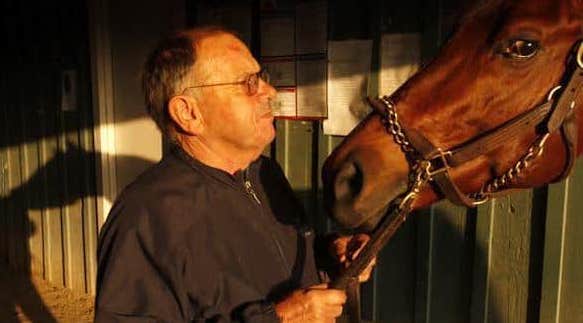 Spawr contends he’d still be training were it not for recent trends that in his view have hamstrung his profession.
Spawr contends he’d still be training were it not for recent trends that in his view have hamstrung his profession.
“Racing is already about the most regulated sport there is, and now it is so over-regulated that decisions are taken away from a qualified trainer by people who aren’t qualified to make those decisions,” he said. “I just couldn’t go on training in that climate.”
Spawr was alluding to the heightened protocols involving pre-race horse inspections and diagnostics required by 1/ST Racing, the operators of Santa Anita Park and Golden Gate Fields, above and beyond what is required by the California Horse Racing Board.
It is the contention of Spawr, and many of his colleagues, that unnecessary veterinary costs are being incurred by owners, legitimate racing opportunities are being missed, and common sense horsemanship has been replaced by a one-size-fits-all management mindset that serves to marginalize the hard-earned experience of diligent caretakers. “And it doesn’t look like that’s going to change any time soon,” Spawr added.
Spawr spent most of early March selling off his barn equipment and making certain his remaining horses were transferred to worthy stables. The last several years have presented health challenges, first with back problems that required surgery, and then with a freak accident in which he badly fractured an ankle.
Fortunately, Spawr notes, heart, lungs, kidneys and brain cells are working just fine, and he has come to manage back pain through physical therapy. He still awakens well before dawn each day, but if he had his way he would still be going stall to stall in those wee hours.
“That’s what I loved about training,” Spawr said. “It was trying to solve the puzzle of every horse. Trying things that you’ve spent a lifetime learning from experience, because you never know what will unlock their ability.
“I’m not going away, though,” he said. “I have pieces of a few runners, and I have owners who want me to consult on their horses. I’m still out here every morning and every racing day, watching horses train, walking to keep fit. I did six miles today, which gives me plenty of time to remember a whole bunch of great stories.”
Uh-oh. Here we go again.
“Like the time Jerry Fanning and his rider, Huey Barnes, woke me up at 4am in my tack room at Santa Anita and told me to get a filly ready to work, before the training track was even open,” Spawr began. “Did I tell you about that one?”
• View all Jay Hovdey’s features in his Favorite Racehorses series
Horse racing at the movies: Casey’s Shadow gets into the details like few feature films
Horse racing at the movies: Champions was different from the maudlin crowd
Azeri: ‘She was easy to adore … she was all racehorse’ – spotlight on a forgotten filly
View the latest TRC Global Rankings for horses / jockeys / trainers / sires


